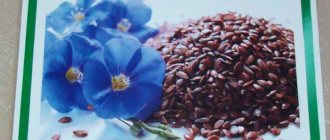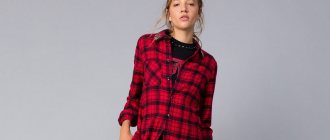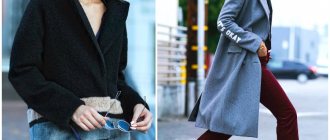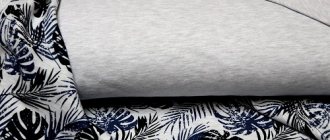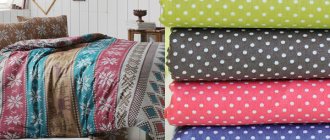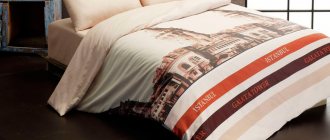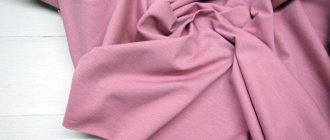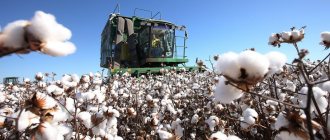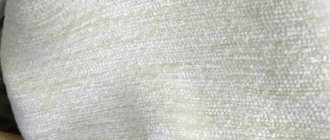What is made from cotton, besides fabrics?
Cotton is the oldest natural fiber, used for different purposes depending on the culture and era of a particular country. Cotton fiber has been processed and obtained since the construction of the Egyptian pyramids. The scope of its application is very wide.
Cotton fabric has a number of useful properties, such as softness, lightness, harmlessness to health and excellent thermal conductivity. Therefore, cotton is still used to this day, if not in its pure form, then in combination with other synthetic and natural fabrics in the production of various items of clothing.
The cotton content in summer clothes is high. Most T-shirts, summer sundresses, socks and other summer items are made up of more than 50% cotton fabric. The factor that cotton is incredibly light and can quickly absorb and evaporate moisture played a role here.
Only long cotton threads are used in clothing production. The shorter ones are further processed and they make excellent personal hygiene products, including cotton swabs, sticks, pads, diapers and much more, because cotton is a hygienic and natural material.
Not so long ago, cotton fabric began to be used in the production of artificial leather for the automotive industry, as well as a number of elements of car tires. When processing cotton, seeds with the so-called fluff remain. Podpoushek is used in the production of plastics, photographic paper, photographic films and even paints and varnishes. Cotton seeds are rich in fats, so they produce oil that goes into the cosmetic industry.
Even waste from cotton processing, such as cake and husk, is not wasted. It is added to feed for cattle, because it is rich in proteins, the total weight fraction of which exceeds 40%.
In many Eastern cultures and beliefs, cotton is used to make various protective amulets that save from evil spirits, illness, poverty and failures in love. It is very easy to make such a talisman by taking a handful of any 27 seeds and a piece of cotton fabric. The seeds are folded into cloth and wrapped, then a cotton thread is taken, the cloth is tied, and then the resulting bag is hung around the neck.
Popular models
The modern fashion industry offers many new items made from cotton with the addition of silk fibers and other threads, which makes the product look even more elegant, more formal, and the colors brighter. Today, clothing manufacturers, guided by fashion trends of the time, offer numerous styles of cotton dresses:
- Fitted, simple, with a complex cut;
- Available;
- With full skirts and narrow ones;
- With different lengths and shapes of sleeves, collar trims.
Every girl and woman must have a cotton dress in her wardrobe and more than one! Clothing made from cotton material will look great on any figure and at any age.
Let's look at the most popular dress models:
- Simple cotton dresses for every day, without complex designs and additional decorations, will always be relevant. A short dress with open shoulders, a sundress is perfect for relaxing, walking or traveling out of town, to the country, to the sea. You can complement the look with a hat or scarf. If a simple outfit is made in subdued colors, below the knee length, and has a small sleeve, then you can safely go to work in it;
- Russian style models are more popular than ever. A folklore image will make every woman unforgettable. Cotton fabrics are best suited to this style, since similar dresses were made from 100 cotton in the distant past;
- Moms will agree that cotton dresses for girls are ideal for summer. They can be of a variety of styles, colors;
- If you have to go to a celebration on a hot summer evening, then women's dresses made of medium-length cotton are perfect for such a visit. Just add elegant accessories: heels, handbag, beads or bracelet.
Fashion shows taking place in famous European cities prove that dresses made of cotton fabric are relevant and fashionable for the modern woman.
I would also like to say something about products made from mercerized cotton. This fabric is treated with a sodium hydroxide solution, which gives the material a special softness and silkiness. Products made from this material are much more expensive than those made from plain cotton. But any woman in this outfit will shine.
Mercerized cotton is used to make yarn for hand and machine knitting. A knitted dress made of cotton with this yarn will delight the most discerning fashionistas! The texture of the suit will look like a “small hole”, which will make the body comfortable, even in very hot weather.
Let's look at examples of fashionable new items made from cotton:
- The unique outfit is a cotton dress with embroidery. A variety of colored patterns and various country-style ornaments will make the owner stand out from the crowd, emphasizing her individuality;
- The crinkled cotton dress is back in fashion. The header is convenient, it does not wrinkle, and does not require ironing. The innovation of this model lies in the originality of the styles (jabot, embroidery, length, flounces) - now this option is suitable not only for ordinary days, but also for holidays;
- Fashion trends suggest replacing dressing gowns with long and short cotton dresses: chitons (floor-length), tunic models, long T-shirts, dressing gowns. A great option is a floor-length cotton dress with slouches at the hips and waist, as well as stylized kimonos;
- And for an evening out, the proposals from the designers are very original - an outfit in lingerie style! This is an exclusively evening clothing option for young ladies with a good figure. Thin straps, lace, delicate cotton satin fascinate with their femininity;
- The trend is beautiful floor-length dresses made of cotton, they visually lengthen and make your figure slimmer. Such models hold their shape well and do not stretch. Current styles: open-shouldered, high-waisted, with sleeves, with fluffy hemlines, multi-tiered. You definitely need to complement the look with high heels and a small clutch;
- Fashion designers offer evening cotton maxi dresses, glamor-boho style: flounces, ruffles, lots of layers.
If you purchased a model made of thin cotton, then do not forget about a delicate moment - a combination under the dress is a must. For plus size women, special attention is paid and the widest range of outfits made from natural fabrics is offered, taking into account all the features of curvy shapes:
- Cotton tiered shirts, cut at the bust line;
- The silhouettes of the models are semi-fitting, feminine with slightly flared skirts, as well as peplum styles;
- For work, business ladies are offered two-piece suits;
- The hit of the season is the boho dress, it’s bohemian chic! The main feature of this model is multi-layering and freedom of cut. A woman in such an outfit is especially beautiful;
- Women with curvy figures can afford to show off the trendy combination. But, with leggings or loose trousers;
- You definitely need to buy trendy floor-length dresses. The style will correct the figure and add femininity.
Briefly about cotton
Cotton is a very demanding plant. For successful germination it needs a hot climate and a lot of moisture. Since in hot climates the ground cannot be wet, irrigation canals are created that strictly regulate the water supply.
Today we know about 35 types of cotton, but only two types are of industrial interest:
- Medium-fiber cotton has a ripening period of 130-140 days from the day of sowing and produces fiber 25-35 millimeters long;
- Fine-staple cotton
has a longer ripening period and lower yield. But its fibers are 35-45 millimeters long, it is thinner and stronger than medium-fiber. Fine fiber is used to produce high quality yarn, hence its price is higher.
Cotton growing process
The first cotton seedlings after sowing are observed after 7-10 days. With the appearance of the first shoots over the next 35-40 days, the cotton plant grows, fruiting branches are formed, which will ripen until the first flower opens for about another 30 days. Cotton blooms for only one day, after which another 50-60 days will pass until the first bolls appear in which seeds are formed. As the seeds ripen, fibers appear on their surface in the form of thin-walled tubes.
At first, the fibers grow in length to a maximum and only in the last month of ripening cellulose is deposited on the walls of the fibers. The first to ripen are the boxes on the lower branches of the bush. At the end of the ripening period, the fibers on the seeds take the form of twisted, flattened ribbons, inside of which there is a channel. As it matures, the channel narrows due to an increase in the thickness of the fiber walls.
It is worth collecting only ripe raw cotton, in which the fibers have not yet separated from the seeds. The approximate ratio of fibers and seeds in the collection will be 40% to 60%, respectively. If the crop is harvested earlier, it will be unsuitable for textile production, since unripe fibers are not strong, but in overripe ones, on the contrary, the fibers are thick and have high strength, but they are very tough.
Which length do you prefer?
When choosing an outfit, you should follow some rules:
- It is advisable not to wear too short dresses to work;
- Long models are universal, they give a feeling of flight;
- For short women, it is better to give preference to one-piece dresses rather than sets of skirts and blouses (they visually shorten your height);
- Tall and slender women will not always suit very high heels with long dresses - they will lengthen the look even more;
- Length to the middle of the calf (with a flat bottom) complete with stable heels suits curvy ladies very well.
From raw cotton to yarn
After harvesting, the raw materials are sent to the cotton gin plant. At the factory, the cotton fibers are only separated from the seeds and pressed into bales. And then they are sent to spinning factories. Work in factories begins with the inspection and weighing of each bale. Then the raw material is subjected to loosening, mixing and beating.
By loosening bales of tightly compressed cotton, it is divided into small fibers and cleansed from debris. Then all the fibers from different batches are mixed together to obtain raw materials that are homogeneous in properties. Fraying promotes further loosening and cleaning of the fibers. Canvas is a loose fibrous mass obtained after loosening and fraying and fed to carding machines for final cleaning and separation into individual fibers.
Carding machines turn cotton into a sliver of uneven thickness. To equalize the thickness, several tapes are folded into one and pulled out, resulting in a tape equal to the original thickness, but more even. Now all that remains is to straighten and make the fibers of the tape parallel.
Before sending cotton strips to weaving factories, it is still necessary to bring the thickness of the raw material to the thickness of the yarn. This work is already done by drawing, roving and spinning machines. After which the cotton yarns are sent to weaving factories.
What is made from cotton?
Cotton is a very popular natural raw material all over the world. It is used in different areas, but not all of it is the same:
- Fine staple cotton
. It is processed into smooth and fine combed yarn. In production, it is used to produce high-quality cotton fabrics such as cambric and voile; - Medium-fiber cotton
is used for the production of calico, calico and satin. The fluff of short fibers not suitable for spinning production is used for furniture, clothing and medical wool; - Down and down cotton
is also used in the chemical industry. Films, artificial fibers and threads, varnishes and even explosives are made from them. Non-woven towels are also produced from fibers that are unsuitable for spinning.
For what purposes can it be used?
Cotton fabric can be used for:
- Sewing men's and women's clothing.
- Sewing children's clothing.
- Sewing home textiles - linen, towels, etc.
- Production of filter materials used in the food, construction and chemical industries.
- Production of cleaning materials for the medical industry.
- Production of materials for other technical purposes.
Examples of cotton items
From yarn to fabric
Weaving is an equally light manufacturing process that results in an unsightly, harsh fabric that requires further finishing.
The cotton finishing process consists of several stages:
- Searing
. The raw fabric is singed to remove single protruding fibers. The surface of the fabric is cleaned. Harsh fabric for the production of gauze and terry fabrics is not singed. - Removing sizing. Having eliminated single fibers, they begin to remove the adhesive composition (size), which is applied during the weaving process. Then they are washed in cold water and boiled to remove fatty, waxy substances and starch residues. To obtain white fabric, it is necessary to carry out a bleaching operation.
- Nailing and mercerization. After bleaching, the fabric is sent to a further finishing stage: Napping must be carried out to obtain a flannel or flannel. As a result of napping, a pile is formed on the front side of the fabric.
- Mercerization produces satin or chintz by treating the bleached fabric with a solution of caustic soda. This process gives the fabric shine, silkiness and strength.
Linen fabrics go straight to final finishing, the rest are either plain dyeing (dying the fabric in one color) or printing (dying the fabric in several colors with a pattern).
Designs on cotton fabrics are produced using machine printing. The number of colors used in the design is strictly proportional to the number of machine shafts.
Next, the fabric is sent for final finishing: finishing
,
widening
and
ironing
.
Finishing is the process of applying a special composition to fabric.
This process allows you to impart crease resistance, moisture absorption, water repellency and other properties to the fabric, depending on your needs.
Stretching is the process of aligning the width of the fabric.
. During the widening process, distortions in the fabric are eliminated and bent threads are straightened.
Ironing
is the final stage. The resulting fabric is ironed on steel rollers (calenders) with internal heating. It is then folded and packaged.
Methods of applying patterns to cotton
- Plain dyed is a deep, uniform coloring. The finished fabric can be dyed in rolls. A brighter shade is obtained by dyeing fibers or threads.
- With a printed pattern - this application of a colorful design can be done either by hand or by machine. Direct printing is especially popular among machine machines.
- Harsh is the name given to fabrics immediately after weaving, straight from the loom. No painting or finishing.
- Bleached - before applying the design, the fabric is most often bleached or pre-dyed in light shades.
- Multicolored - the pattern on such fabrics is revealed during the weaving process. The main patterns are herringbone, stripe, check.
Variegated Finish - Formed during the weaving process where threads (yarn) of different colors are used to create the warp and weft fabric. The main patterns are stripes, checkers, checkerboard patterns, herringbone.
Cotton: everything about the fabric
Cotton is one of the most popular materials in the world. It exists on every continent and every nation uses it. It has a centuries-old history and still remains popular due to its unique properties and human-friendly characteristics.
Soft fabric can satisfy the needs of different people; it has a number of useful characteristics: density and strength depend on the length of the fiber. Cotton is a natural fabric that is obtained from a special plant - the cotton plant, using its fruits. Making a thread from a spinning plant is not an easy task; since ancient times it has been accompanied by special traditions and rituals.
Fabric composition and its properties
The composition includes about 95% cellulose.
The remaining percentage is synthetics, which are added to improve the quality of the material. Cotton has the following properties:
- breathability;
- ease;
- softness;
- ability to retain heat;
- ability to absorb moisture;
- medium strength;
- tendency to form pellets;
- natural white or slightly yellowish color;
- tendency to form wrinkles.
How did cotton come about?
According to archaeologists, this fabric has already existed for twelve thousand years. It is difficult to determine who was the first to grow this crop. But at different times it was popular in India, China, Mexico, Ancient Egypt and in the territory of modern Pakistan. And in Babylon they called it “white gold” and valued it appropriately.
But at the same time, India is considered the birthplace of cotton, because it is there that the cultivation and production industry for making fabrics begins. The first written sources indicate precisely this; even in songs of praise, words about this material were sometimes heard. The mythology of this people confirms that the Indian believers were firmly convinced that cotton pillows were intended only for the gods.
But Europeans became acquainted with cotton only at the beginning of the 11th century, when active trade with the Arabs began. But the peak and excitement around this material began only with the beginning of the industrial revolution. In the middle of the 18th century, the first spinning machines were registered in England.
The constant improvement of all technologies has led to the emergence of many options for cotton fabrics: dense and light, loose and slippery.
History of appearance
It is difficult to say exactly when and under what conditions cotton appeared. According to one version, his homeland is India . During excavations there, fabrics woven as far back as 3,250 BC were found. The texts of Indian songs have been preserved, in which cotton fabrics are compared with “gifts from heaven . According to legend, the gods slept peacefully and pleasantly on pillows made of this material, after which they became kinder to ordinary mortals.
Experts call Egypt . Remains of fabric created in 2500 BC were discovered there. The mummies of the pharaohs of that period were also wrapped in thick cotton.
Cotton came to Europe in the form of finished fabrics, which is why many did not know what the raw material actually looked like. There were rumors among the people about cotton as a fabulous lamb plant with an umbilical cord stem, which is why the price of such canvases was surprisingly high. In Ancient China, cotton was even more expensive than silk !
Fabric properties
What is included in the list of properties of cotton, and why has it become the favorite of the majority? These are short fibers that twist around an axis, they fluff a little. Cotton is a durable material: it is resistant to chemical attack and does not deteriorate when constantly exposed to sunlight or water.
Positive qualities of cotton fabrics that any housewife will like:
- can withstand temperatures up to 130 degrees Celsius;
- are breathable, making them ideal for hot weather;
- soft and light;
- are not electrified;
- do not cause allergic reactions;
- do not lend themselves to rapid abrasion, which increases their service life;
- easy to dye - a plus for production work and clothing that is made by hand.
Stains can be easily removed with organic solvents (alcohol or vinegar) that will not harm the cotton fabric. The interweaving of the threads is specially made so that the fabric retains heat, although visually it is difficult to believe. When wet, the material does not tear, like many other fabrics, but becomes even stronger than before.
Scientists have experimentally determined that fabric can deteriorate under the influence of the sun only after 1 thousand hours of continuous exposure to the sun. Therefore, you don’t have to worry about this aspect of storing things.
However, this will not be without visible shortcomings. These include the following fabric properties:
- wrinkles quickly and easily, which is typical for all types of natural fabrics;
- may become deformed and shrink over time;
- After prolonged use in bright light, a slight yellow tint appears.
Cotton dries slowly because it is highly hygroscopic. This means that it itself absorbs about 20% of its weight in moisture.
Sometimes, to achieve a certain effect, other impurities are added to this fabric: lycra or polyester. This way you can achieve the appearance of lint and make the material completely smooth. This fabric is used everywhere: it is suitable for bed linen, clothing, curtains, raincoats and coats; even furniture is often upholstered with this material.
Properties and characteristics of cotton
- The material is able to absorb moisture and increase in volume by 40%. When interacting with water, cotton becomes even stronger.
- With prolonged heating and exposure to sunlight, strength decreases. Comfortable temperature for processing is 130 °C.
- Hollow fibers allow air to pass through, so the fabric retains heat.
- You can check its naturalness using an experiment: when set on fire, it will emit the smell of burnt paper.
- Can be ironed and does not lose shape after exposure to high temperatures.
- You can avoid wrinkles using processing or a special weaving method, as is the case with fabrics from the “Yoga” collection by Cotonificio Albini - cotton and linen fabrics stretch without adding elastane.
Types and varieties of cotton
- Voile : A lightweight but durable plain weave fabric made from highly twisted threads. Smooth voile with a delicate silky sheen is an ideal choice for comfortable summer blouses and dresses.
- Percale: At the end of the 18th century, this fabric was soaked in linseed oil and used to make sails. In the 21st century, not only sails and parachutes are made from percale, but also bed linen, dresses and blouses.
- Batiste: plain weave fabric made from the finest twisted yarn. The origin of the name is associated with the name of one person, according to some versions, who began the production of cambric in Flanders in the 13th century.
- Poplin: initially the canvas was made only from silk. Today, poplin is most often made from cotton. The material is a combination of a thin warp with a coarse cross weft in the form of a small rib. It received an interesting name in honor of the Pope, at whose residence it was produced in the 14th century.
- Taffeta : glossy fabric, quite dense, stiff and durable. An ideal option for festive items, as taffeta drapes perfectly.
- More beautiful: the main difference is the “bruised” effect due to special chemical treatment. Sometimes metallic gold or silver threads are added to the composition.
- Kisey: light and transparent, almost weightless plain weave fabric. It is popular as an interior textile in the East due to the hot, stuffy climate.
- Tulle : translucent, airy material, which is made not only from cotton. It received its name in honor of its historical homeland - the French city of Tulle.
- Guipure : beautiful guipure lace on a fine mesh. The name comes from French. The word "guipure" translates as "airy lace", which is quite consistent with the appearance of this delicate fabric. To make the fabric, a special knitting machine is required.
- Combed satin : a dense fabric with a satin weave. The front side is smooth, silky, and weft threads predominate on it.
- Chintz : a thin, delicate plain weave fabric.
- Calico: calico came to Russia from Asia, and independent production began in the 16th century. Fabric made of thick threads of plain weave. The density varies from 50 to 140 threads per square centimeter. The thinner the threads, the higher the density, which is why calico is more valuable. A popular material for making bed linen. It is not surprising, because such fabric practically does not wrinkle and can withstand up to 200 washes.
- Carded Satin: A dense satin created from thicker threads than combed. There are mercerized and non-mercerized types of material.
Mercerization is a short-term treatment of fabric with solutions to improve the characteristics of the fabric. John Mercer first used mercerization of cotton in 1851. The processing process was named after him. The purpose of mercerization is to give cotton fiber shine and the ability to dye more intensely, as well as to increase its mechanical strength. The essence of the process is to treat fabrics or yarn with concentrated solutions of caustic soda (240-280 g/l) at a temperature of 16-20 ° C under tension, followed by vigorous washing with hot and cold water.
- Creton : A dense plain weave material commonly used for upholstery. They are created from pre-dyed threads that form different patterns.
- Tricots : cotton fabrics with a distinct weave pattern.
- Fleece : A warm, cozy fabric usually made from wool. Cotton baize is valued for its lower cost and light weight.
- Flannel : A plain or twill weave fabric with an even fluffy pile on one or both sides.
- Fumazeya : dense twill weave fabric with brushing on the reverse side, sometimes brushed on both sides.
- Peña : silky knitted fabric of the highest quality. Elastic and smooth surface.
- Ring : knitted fabric made from medium-length cotton fibers. Fleecy and smooth.
- Opened: Open End - knitwear with short fibers, quite loose and not very durable. It often stretches out greatly, loses its shape, tears and becomes covered in pellets.
How is cotton made?
The process of obtaining cotton fibers occurs in just a few steps. For this, first of all, ripe bolls of the cotton plant are needed. Then the following stages follow one after another:
- Traditionally, seeds are collected by hand, but on large plantations special processing machines are used.
- In warehouses it is measured and placed in certain places.
- They are sent to special factories where processing takes place: the grains are separated from the fibers and sorted using gins, linters and other automatic mechanisms.
- Afterwards the fibers are pressed and sent back to the warehouse.
- They are already making continuous thread or yarn.
The next level of turning this yarn into a full-fledged fabric becomes the responsibility of the weaving industry. There they make fabric from it, weaving the threads together. Then a real product is prepared from the material or sold in this form.
Threads are often intertwined with other materials of artificial origin to give them other properties. For example, to make it stronger or reduce wrinkles. Different techniques of weaving threads make the fabric patterned and add more interesting shapes to it.
How to care for cotton clothes?
You need to remember the basic rules that will help you extend the life of such products and keep them safe and sound for a long time. You can wash white and plain clothes only at a water temperature of up to 95ºC, multi-colored clothes - up to 60ºC. Can also be machine washed.
The choice of detergent is not particularly different from other materials. It is advisable to use products without bleaches for colored laundry; in this case, detergents for delicate washing are ideal.
When you dry cotton items, it is better to make sure how this is done - such information is usually written on clothing labels. But most often, you first need to hang the clothes damp, and then immediately iron them with an iron on the “wool” setting. But an excellent option: iron clothes damp in the “cotton-linen” mode using steam.
The fabric is pleasant to the touch and does not cause an irritating reaction in areas of contact with the body. That’s why it is used for children’s and adult clothing and bedding.
If you want to get some product made from a pleasant fabric of natural origin, then you won’t find a better option.
How to sew from cotton?
If you want to sew a product yourself and try yourself as a professional seamstress, then first of all you need to decorate the fabric. Of course, not all types of cotton fabrics are subject to severe shrinkage, but you shouldn’t take the risk of wasting the material again.
Decorating fabric at home is done using an iron; you only need to buy a special device if you are going to sew a lot and regularly. Before cutting, you need to wash the fabric and iron it, following all the rules in the instructions for a specific type of material.
This procedure will allow you to avoid unnecessary consequences when, after the first wash, clothes decrease in size. On average, when cutting, you need to add ten extra centimeters, after which they can be removed.
The process of cutting and sewing itself will not be a problem for you, because the fabric is obedient, the details on it do not move and will not interfere with you. You just need to choose a sharp needle and a thread of similar thickness and density. But you need to baste the fabric using the most inconspicuous devices possible, so that the stitches remain invisible on the finished product.
Pros and cons of fabric
The obvious advantages of cotton include:
- Ability to absorb moisture.
- Air permeability, which allows the skin to “breathe”.
- Thermal insulation properties.
- Softness.
- Easy to paint.
- Hypoallergenic.
- Resistant to moth damage.
Among the disadvantages are:
- Increased creasing and wrinkling ability.
- Shrinkage after washing.
- Decrease in strength and yellowing of fibers when exposed to sunlight.
What is cotton fiber made from?
In addition to ordinary fabric, cotton fibers become the basis for other useful materials. The most popular use cases are:
- long fibers are used for thin, expensive fabrics;
- medium length is needed for simpler fabrics - chintz or calico;
- a mixture of artificial fabrics is already added to knitted products;
- medical cotton wool;
- fillings for pillows and blankets.
The advantage of using cotton and cotton fibers for such purposes is that they do not caking and are environmentally friendly materials.
The properties and quality characteristics of conventional cotton and organic cotton differ significantly. The second version of the material is made only using modern growing and processing technologies. No pesticides or other fertilizers are used that will harm the final product. And the first option is a way to earn money quickly and without special expenses.
Therefore, be careful when purchasing. Products made from organic cotton are marked “organic cotton”.
We believe that it was pleasant and useful for you to read this, and we invite you to look at our first-class Italian cotton fabrics from the Cotton category. We wish you happy sewing!
About our store
Fashion Fabric is a store of high-quality clothing fabrics at affordable prices. We deliver throughout Russia by mail or transport company.
Here you will always find a large selection of seasonally relevant Italian fabrics!
Stay up to date with our promotions, subscribe to our newsletter:
What is best to combine with
In order for the outfit to sparkle and create a complete image, you need to take into account the nuances:
- A long white cotton dress goes well with gold jewelry. You can dilute the white color with glasses. Shoes, sandals, bag can be either the color of the dress or in contrast;
- A bright dress with a print, medium length, goes well with heels, a small bag, a bracelet;
- For the “boho” style, do not forget about additions in the form of massive beads, pendants, large earrings, extravagant bags;
- A rich dress, such as red, does not need additional accessories;
- The advantage of blue is that it goes well with other colors, which means it’s very easy to select accessories.
If you can’t figure out how and what to combine clothes with, you can always look at information in fashion magazines or consult in stores.
